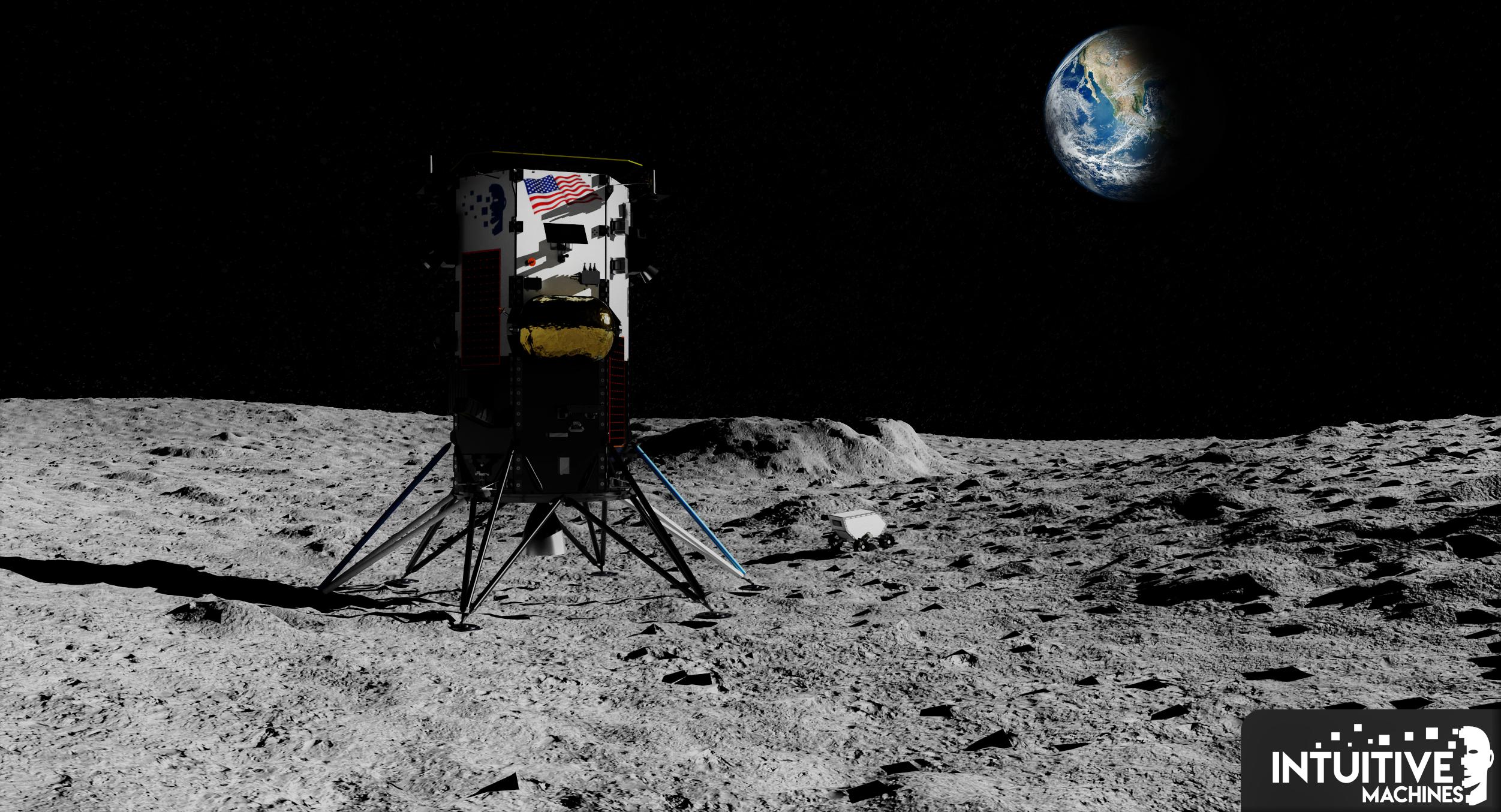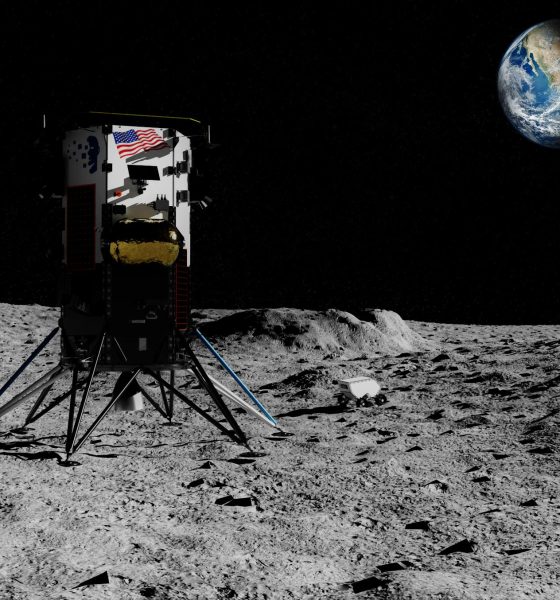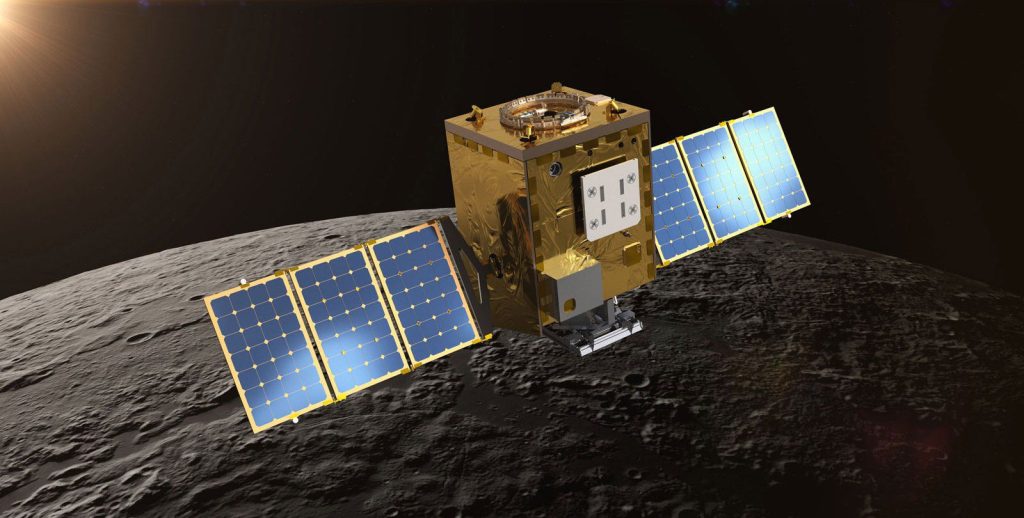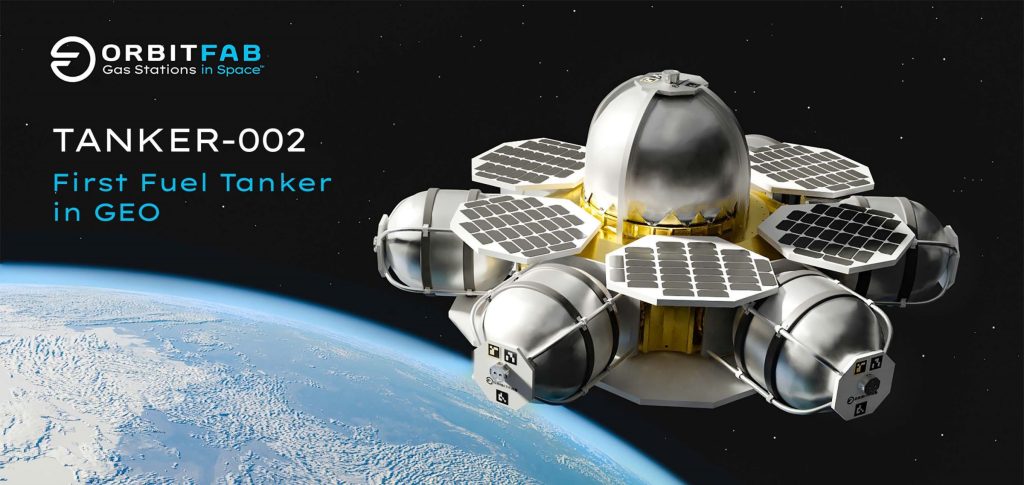

News
SpaceX to launch asteroid mining spacecraft alongside private Moon lander
SpaceX customer Intuitive Machines says it will use spare capacity on one of its Moon lander launches to send startup AstroForge’s first asteroid prospector spacecraft into deep space.
Intuitive Machines’ second Nova-C Moon lander is scheduled to launch no earlier than (NET) Q4 2023 on a SpaceX Falcon 9 rocket. The IM-2 lander is the primary payload but is only expected to weigh about 1.9 tons (~4300 lb). To take advantage of the rocket performance left on the table by the relatively light payload, Intuitive Machines has opted to include a secondary payload adapter ring (ESPA) located below each lander. That gives companies like AstroForge an opportunity to hitch a ride to high Earth orbit, deep space, and the Moon for a likely unbeatable price.
Built by UK startup Orbital Astronautics, AstroForge’s Brokkr-2 spacecraft will attempt to become the first private vehicle to prospect for resources on an asteroid. It’s also the third rideshare payload announced for Intuitive Machines’ IM-2 mission.
We’re excited to launch these missions and many more to come. More information on this year’s launches: https://t.co/MSR61V8Lh7— AstroForge (@ForgeAstro) January 24, 2023
The update that's rolling out to the fleet makes full use of the front and rear steering travel to minimize turning circle. In this case a reduction of 1.6 feet just over the air— Wes (@wmorrill3) April 16, 2024
Lunar Trailblazer
Coincidentally, the main purpose of the second IM-2 rideshare payload to be announced is to search for resources in space. It isn’t concerned with asteroids, but NASA’s 200-kilogram (440 lb) Lunar Trailblazer spacecraft is designed to find, characterize, and map water ice resources on the Moon. That map could help future missions explore the possibility of turning lunar ice into commodities like breathable oxygen or rocket propellant.
The challenges facing such a concept are extreme, but a rocket propellant depot located on the lunar surface could significantly increase the performance of future Moon landers. Propellant depots in cislunar orbit could also help boost spacecraft further and faster to destinations elsewhere in the solar system.

Tanker-002
The first IM-2 rideshare payload to be announced was OrbitFab’s Tanker-002 spacecraft. It’s unclear if OrbitFab is on track to fly Tanker-002 in late 2023, but the spacecraft is meant to be the first geostationary propellant depot ever launched. The Colorado startup has already won a $13.3 million contract from the US military to refuel satellites in geostationary orbit, 36,000 kilometers (~22,250 mi) above Earth’s surface. It’s possible that Tanker-002 is meant to support that refueling mission.
The spacecraft is designed to carry a few hundred pounds of hydrazine monopropellant, potentially enabling it to extend the useful lives of multiple multimillion-dollar satellites by several years. Alongside IM-2, Falcon 9 will launch Tanker-002 on a lunar flyby trajectory. But thanks to the cooperation of startup GeoJump, instead of entering orbit around the Moon, Tanker-002 will slingshot around the Moon to slow itself down. That lunar slingshot will allow the depot to efficiently enter geostationary orbit, where it can begin refueling spacecraft.

Brokkr-2
Brokkr-2 is the second of two AstroForge spacecraft scheduled to launch in 2023. The first, Brokkr-1, will head to low Earth orbit (LEO) as early as April 2023 on SpaceX’s seventh Falcon 9 rideshare launch. Once in orbit, it will attempt to demonstrate technology AstroForge has developed to refine platinum ore in microgravity conditions. Brokkr-2 will then visit an asteroid and search for platinum resources. If enough platinum is discovered, Bloomberg reports that AstroForge will send a third mission to demonstrate the ability to land on the asteroid. As early as 2025, AstroForge’s fourth mission would be the first to attempt to land, gather ore, turn that ore into platinum, and return the precious metal to Earth.
AstroForge has raised $13 million to date. Unlike failed asteroid mining startups Deep Space Industries and Planetary Resources, the new company intends to exploit increasingly capable off-the-shelf hardware and services to keep its costs as low as possible. In theory, that will allow it to focus most of its resources on developing the unproven technology required to gather and refine space-based resources.

IM-2
Finally, the IM-2 Nova-C Moon lander’s primary payload is a pair of NASA instruments designed to drill into the lunar surface and analyze the regolith for volatiles. Also known as PRIME-1, the mission will be NASA’s first serious exploration of in-situ resource utilization (ISRU) on the Moon.
The mission is a sort of microcosm of the future of space utilization, which may focus heavily on ISRU and refueling to extend the capabilities of chemically-powered rockets and spacecraft. Lunar Trailblazer will map lunar water resources. Brokkr-2 will attempt to prospect an asteroid for extractable metal. IM-2 will test technologies that could help extract resources from the Moon. And Tanker-002 will be a significant step forward for commercial propellant depots, which could eventually create markets for space resources.

Elon Musk
Elon Musk’s X will start using a Tesla-like software update strategy
The initiative seems designed to accelerate updates to the social media platform, while maintaining maximum transparency.

Elon Musk’s social media platform X will adopt a Tesla-esque approach to software updates for its algorithm.
The initiative seems designed to accelerate updates to the social media platform, while maintaining maximum transparency.
X’s updates to its updates
As per Musk in a post on X, the social media company will be making a new algorithm to determine what organic and advertising posts are recommended to users. These updates would then be repeated every four weeks.
“We will make the new 𝕏 algorithm, including all code used to determine what organic and advertising posts are recommended to users, open source in 7 days. This will be repeated every 4 weeks, with comprehensive developer notes, to help you understand what changed,” Musk wrote in his post.
The initiative somewhat mirrors Tesla’s over-the-air update model, where vehicle software is regularly refined and pushed to users with detailed release notes. This should allow users to better understand the details of X’s every update and foster a healthy feedback loop for the social media platform.
xAI and X
X, formerly Twitter, has been acquired by Elon Musk’s artificial intelligence startup, xAI last year. Since then, xAI has seen a rapid rise in valuation. Following the company’s the company’s upsized $20 billion Series E funding round, estimates now suggest that xAI is worth tens about $230 to $235 billion. That’s several times larger than Tesla when Elon Musk received his controversial 2018 CEO Performance Award.
As per xAI, the Series E funding round attracted a diverse group of investors, including Valor Equity Partners, Stepstone Group, Fidelity Management & Research Company, Qatar Investment Authority, MGX, and Baron Capital Group, among others. Strategic partners NVIDIA and Cisco Investments also continued support for building the world’s largest GPU clusters.
News
Tesla FSD Supervised wins MotorTrend’s Best Driver Assistance Award
The decision marks a notable reversal for the publication from prior years, with judges citing major real-world improvements that pushed Tesla’s latest FSD software ahead of every competing ADAS system.

Tesla’s Full Self-Driving (Supervised) system has been named the best driver-assistance technology on the market, earning top honors at the 2026 MotorTrend Best Tech Awards.
The decision marks a notable reversal for the publication from prior years, with judges citing major real-world improvements that pushed Tesla’s latest FSD software ahead of every competing ADAS system. And it wasn’t even close.
MotorTrend reverses course
MotorTrend awarded Tesla FSD (Supervised) its 2026 Best Tech Driver Assistance title after extensive testing of the latest v14 software. The publication acknowledged that it had previously criticized earlier versions of FSD for erratic behavior and near-miss incidents, ultimately favoring rivals such as GM’s Super Cruise in earlier evaluations.
According to MotorTrend, the newest iteration of FSD resolved many of those shortcomings. Testers said v14 showed far smoother behavior in complex urban scenarios, including unprotected left turns, traffic circles, emergency vehicles, and dense city streets. While the system still requires constant driver supervision, judges concluded that no other advanced driver-assistance system currently matches its breadth of capability.
Unlike rival systems that rely on combinations of cameras, radar, lidar, and mapped highways, Tesla’s FSD operates using a camera-only approach and is capable of driving on city streets, rural roads, and freeways. MotorTrend stated that pure utility, the ability to handle nearly all road types, ultimately separated FSD from competitors like Ford BlueCruise, GM Super Cruise, and BMW’s Highway Assistant.
High cost and high capability
MotorTrend also addressed FSD’s pricing, which remains significantly higher than rival systems. Tesla currently charges $8,000 for a one-time purchase or $99 per month for a subscription, compared with far lower upfront and subscription costs from other automakers. The publication noted that the premium is justified given FSD’s unmatched scope and continuous software evolution.
Safety remained a central focus of the evaluation. While testers reported collision-free operation over thousands of miles, they noted ongoing concerns around FSD’s configurable driving modes, including options that allow aggressive driving and speeds beyond posted limits. MotorTrend emphasized that, like all Level 2 systems, FSD still depends on a fully attentive human driver at all times.
Despite those caveats, the publication concluded that Tesla’s rapid software progress fundamentally reshaped the competitive landscape. For drivers seeking the most capable hands-on driver-assistance system available today, MotorTrend concluded Tesla FSD (Supervised) now stands alone at the top.
News
Elon Musk’s Grokipedia surges to 5.6M articles, almost 79% of English Wikipedia
The explosive growth marks a major milestone for the AI-powered online encyclopedia, which was launched by Elon Musk’s xAI just months ago.

Elon Musk’s Grokipedia has grown to an impressive 5,615,201 articles as of today, closing in on 79% of the English Wikipedia’s current total of 7,119,376 articles.
The explosive growth marks a major milestone for the AI-powered online encyclopedia, which was launched by Elon Musk’s xAI just months ago. Needless to say, it would only be a matter of time before Grokipedia exceeds English Wikipedia in sheer volume.
Grokipedia’s rapid growth
xAI’s vision for Grokipedia emphasizes neutrality, while Grok’s reasoning capabilities allow for fast drafting and fact-checking. When Elon Musk announced the initiative in late September 2025, he noted that Grokipedia would be an improvement to Wikipedia because it would be designed to avoid bias.
At the time, Musk noted that Grokipedia “is a necessary step towards the xAI goal of understanding the Universe.”
Grokipedia was launched in late October, and while xAI was careful to list it only as Version 0.1 at the time, the online encyclopedia immediately earned praise. Wikipedia co-founder Larry Sanger highlighted the project’s innovative approach, noting how it leverages AI to fill knowledge gaps and enable rapid updates. Netizens also observed how Grokipedia tends to present articles in a more objective manner compared to Wikipedia, which is edited by humans.
Elon Musk’s ambitious plans
With 5,615,201 total articles, Grokipedia has now grown to almost 79% of English Wikipedia’s article base. This is incredibly quick, though Grokipedia remains text-only for now. xAI, for its part, has now updated the online encyclopedia’s iteration to v0.2.
Elon Musk has shared bold ideas for Grokipedia, including sending a record of the entire knowledge base to space as part of xAI’s mission to preserve and expand human understanding. At some point, Musk stated that Grokipedia will be renamed to Encyclopedia Galactica, and it will be sent to the cosmos.
“When Grokipedia is good enough (long way to go), we will change the name to Encyclopedia Galactica. It will be an open source distillation of all knowledge, including audio, images and video. Join xAI to help build the sci-fi version of the Library of Alexandria!” Musk wrote, adding in a later post that “Copies will be etched in stone and sent to the Moon, Mars and beyond. This time, it will not be lost.”








